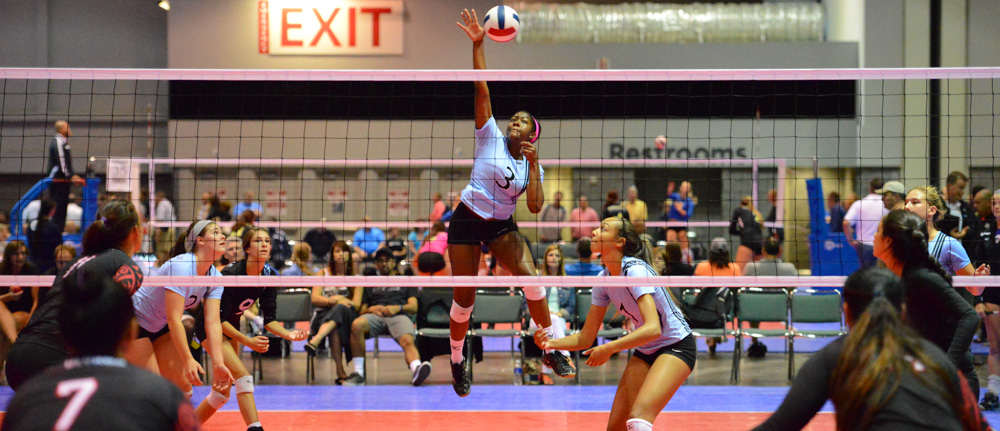

The overhead press is beneficial for training bilateral shoulder strength and stability, as well as ingraining core muscle stabilization and balance. There are two ways to begin the overhead press – lifting the bar from the floor, called a "clean", and unracking the bar from the squat rack already at should height. Initially we'll begin by unracking the bar from the squat rack.
Setup for the overhead press begins with establishing your grip. To maximize shoulder stability, we recommend a narrow "power grip" where you place your hands on the bar shoulder-width apart so that your forearms are parallel and vertical when in the starting position.


Once you have placed your hands on the bar in front of you, you should step underneath the bar taking care to orient your forearms vertically so they are parallel to each other and perpendicular to the floor. At this point, ensure that your wrists are comfortably aligned with your forearms – they should not be "broken" backwards. Once you are underneath the bar and gripping it tightly, the setup for unracking the overhead press resembles unracking the squat -- remember, EVERY lift starts with stabilizing the spine and engaging the core!
Therefore, you again want to squeeze your glutes to set your pelvis and spine in a neutral position, and engage your abs to maintain this alignment. Then think "break the bar" and generate external rotation torque in the shoulders. At this point, when your spine is aligned, core is engaged, and shoulders are tight, you should unrack the weight and step back.
After stepping back, you should again check your spinal alignment and abdominal tone, and strive for maximum tension from head to toe before pushing the bar straight up. Like the squat, you are going to squeeze your glutes, engage your abs, spread the floor, and break the bar. Unlike the squat, however, you are going to maintain tension in your glutes and legs throughout the lift to maintain a solid foundation and prevent bouncing with your lower body. In fact, you should strive to keep your entire body engaged throughout the lift using the cue "Everything tight".
It's important to note that when you unrack for the overhead press, the bar should be resting as close to your body as possible – typically you will be holding it right above the top of your sternum. When you begin to press the bar upwards, you will need to retract your head slightly so that the bar can clear your nose – once the bar is above your nose, you should allow your head to move forward again so that your ears are roughly inline with your extended arms as you finish the lift. From the top position, you will lower the bar back to the starting position, again retracting your head slightly so the bar clears your nose on the way down.

There are two sets of essential cues for the overhead press that you should focus on throughout the lift:
1. "Break the Bar": Much like the squat uses external rotation torque generation in the hips to stabilize the knees and ankles, the overhead press uses external rotation torque generation in the shoulders to stabilize the elbows and wrists.
2. "Elbows Forward" or "Armpits Forward": Keeping the elbows "tucked" and in front of your body aids in torque generation and keeps the shoulder in a maximally stable position. You should avoid "flaring" your elbows in an effort to lift the weight.
Finally, it is important to maintain full spinal alignment at all times. Guard against bending your upper back/thoracic spine.
The cues for the overhead press are as follows:
Practicing the overhead press closely resembles blocking mechanics, and will help you find a strong, stable shoulder position when pressing up to block. Focusing on external rotation torque during the overhead press is especially important to developing muscle memory for strong blocking.
Once an athlete has solid pressing form with an overhead press, it is worth learning the push press as well. The push press adds a "dip and drive" element of generating force from the hips and knees with a vertical torso while pressing a greater weight overhead. The "dip and drive" of the push press trains safe jumping/landing with a vertical torso, and thus even more closely resembles blocking mechanics.